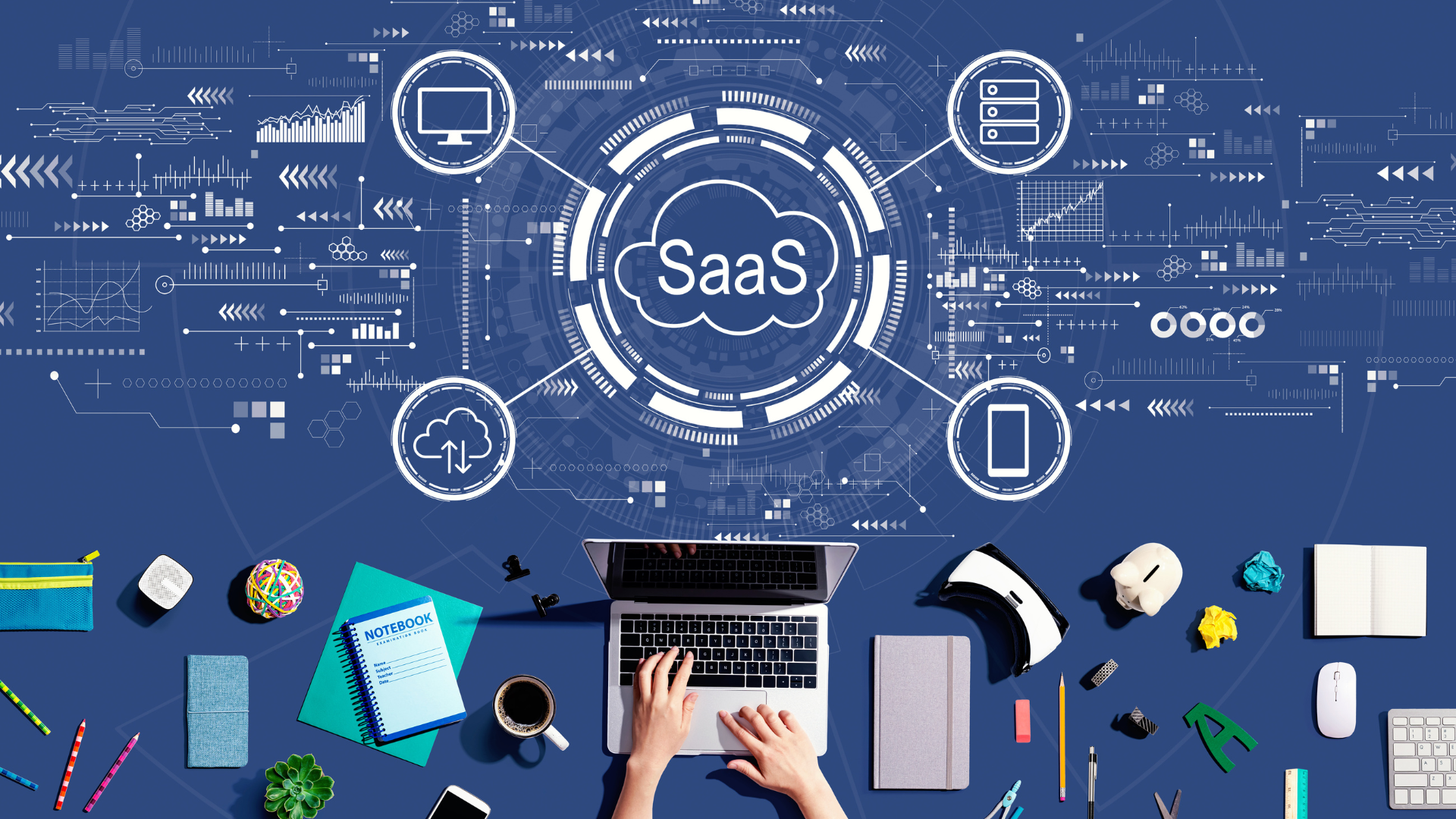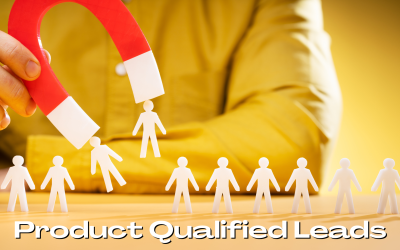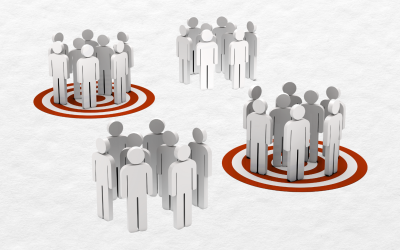Using Lead Generation for SaaS Growth
Have you ever thought that persuading a cat to take a bath is similar to creating SaaS leads? They always run away at the last minute, no matter how well you prepare. Conversion rates remain persistently low even when you spend money on advertisements, cold email campaigns, and social media posts.
The main issue here is, SaaS buyers have no patience. SaaS Buyers are already loaded with generic pitches every day and want something that is quicker and more direct. They want products that catches their attention in a minute, including how worthy the product is or can be.
No matter where you are right now in your SaaS journey, there’s always a door open for fresh, and new opportunities to boost your SaaS Lead Generation for your business. With a growth rate of more than 25% annually for public SaaS businesses, the BVP Nasdaq Emerging Cloud Index highlights the SaaS market’s explosive development.
To uphold your business in the SaaS market isn’t just a piece of cake anymore. It’s about developing a smooth, effective procedure. Your objective, like many others, is to turn leads into loyal clients. However, many groups continue to use manual outreach. Additionally, there are disjointed sales procedures and irregular follow-ups.
Customer competitiveness is heightened by this growth increase, highlighting the significance of efficient lead-generation tactics. It is crucial to take advantage of these chances as maintaining business growth depends on gaining new clients at a reasonable price. So, where do you start? Simple concepts frequently provide the finest outcomes, which is where we can help.
What is SaaS Lead Generation?
SaaS Lead Generation is the process of targeting, attracting, converting, and engaging potential customers who are interested in buying your product or service. Let us break it in an example to understand it better:
Imagine you are running a food delivery SaaS business. The target audience for you will probably not be the people who loves to cook at home or prefers dine outs. Now you know who your target audience are, so now is the correct way to use SaaS Lead Generation to attract and target the right audience at the right time, and not flooding anyone and everyone with a simple text message or an outdated email format.
Rather of cold-pitching to indifferent consumers, you find companies or people that have a genuine need that your SaaS addresses, all the while guaranteeing customer satisfaction. Your goal is to convert high intend leads who looks at your product as the solution of their problem and not just blindly clicking anywhere and everywhere.
Types of Leads in SaaS:
Do not treat every lead equally, because not every lead is similar and treating them same will kill the actual potential of your product or service and sometimes business. Let us understand the type of leads in SaaS:
1. Marketing Qualified Leads (MQL):
MQLs are leads who have been recognized as possible clients but have not yet been approached by a salesperson. These leads are looking for answers right now. Indicators of marketing qualified leads include the following:
- They download your case studies in order to participate.
- They express curiosity by watching videos about how your solutions function.
- They take part in webinars that your business hosts.
Turning them into potential customers shouldn’t be too difficult because they are interested in finding out more about your business. The qualifying procedure can be finished by chat or email. If you think they’re ready, you can set up a presentation or demo. But not every one of them will choose your solution. It’s necessary to be persistent by sending follow-up emails.
2. Sales Qualified Leads (SQL):
SQLs are leads who are prepared for sale and have been approached by a sales professional. To increase their interest in your product or service, these leads often go through a lead nurturing process. You should get in touch with these leads right now because they seem quite promising. You only need to get in touch with these leads, verify their identification, and walk them through the sales process since they are completely qualified.
Reaching out to SQLs, confirming their identification and interest, and then helping them through the final steps of the sales process is your main responsibility. This can include resolving any issues, answering any last-minute queries, and finally sealing the purchase. Since SQLs are prepared and ready to purchase, you should concentrate on offering outstanding customer service and ensuring an effortless lead-to-customer transition.
3. Product Qualified Leads (PQL):
A product qualified lead (PQL) is a consumer who has tried your product, either through a free trial or a freemium model and who, based on their interactions and behavior, showed a high propensity to become a paying customer. Their interactions with the product, rather than just marketing or sales efforts are used to identify and qualify them.
Majorly the SaaS consumers, usually tend to go with the PQL model as the human have this tendency of “try and test” mindset before committing towards the product or service. The big advantage in this model is the ability to identify potential sales opportunities for your business. The sales team does not have to worry about these leads unlike others as they have already tried your product or service in the freemium model.
Automation in SaaS Sales:
Manual is too outdated for this generation, let that take in. When business grows, more leads come in, eventually leading to more sales task. But doing it manually will risk your chance to lose leads, instead commit to automation for faster and better results. Your sales team will also have more time to grow and build relationships with potential customers deeper while nurturing and closing other potential leads.
Consider how powerful this is. You can automatically assess leads, monitor interaction, and provide targeted content with the correct tools. This saves time while ensuring that every prospect receives the relevant information at the right moment in their journey. Processes can be simplified by automation, allowing the sales staff to contact prospects more effectively and with greater quality.
You will be able to determine each prospect’s position in the sales funnel. Better decision-making and more focused outreach are the results of this. And the outcome? Higher conversion rates and Higher ROI.
Which 12 SaaS Lead Generation Steps Generate the Best Outcomes?
It’s important to match your B2B SaaS lead generation tactics with the ways your target clients search, interact, and make purchases in order to generate high-quality leads for your SaaS company.
1. Cold Email Marketing That Generates Responses
When cold emails are generic, pushy, or irrelevant, they don’t work. Rather, emphasize hyper-personalization by bringing up a prospect’s most recent financing announcement, LinkedIn post, or particular company issues. Provide a clear, measurable benefit and center your email on a particular pain area.
For example, an automation SaaS aimed at eCommerce companies may emphasize how they helped a comparable shop cut cart abandonment rates by 30%. Finish with a gentle call-to-action (CTA) like “Would it make sense to discuss how this could work for you?” instead of a pushy pitch.
2. For High-Intent Traffic, Use SEO and Content Marketing
Don’t rank for general SaaS keywords; instead, focus on search phrases that reflect purchase intent at the bottom of the funnel. To increase search engine optimization, write “Best marketing automation tools for B2B SaaS” rather than “What is marketing automation?” Use comparison pages, rival alternatives (e.g., ‘HubSpot vs. Marketo’), and ROI-driven case studies to attract decision-makers who are actively looking for solutions.
For instance, a B2B payroll software targeting HR directors might publish “The 2025 Guide to Effortless Payroll Compliance”, positioning itself as the go-to solution for streamlined HR operations.
3. Targeting the Correct Audience with Paid Advertising
It costs money to run Google, Facebook, or LinkedIn ads without segmentation. Targeting employment titles, company size, and habits will help you narrow down your audience instead. Use ad text such as “Are you still comparing options? ” To retarget website visitors who looked at your price page but did not convert. Discover how [Your SaaS] reduces expenses by 25%.
On LinkedIn, they look for decision-makers who follow challengers or have recently engaged with industry content. Carousel advertisements highlighting the advantages of their solution for several teams (marketing, engineering, and human resources) might be used by a project management software as a service.
4. Using LinkedIn for Social Selling
Before making a purchase, decision-makers study SaaS options on LinkedIn, which is more than simply a networking site. Use regular engagement and content to establish authority and trust rather than cold pitching. Make your profile stand out by emphasizing not just what you offer but also how you solve problems.
You may join relevant online networks and organizations, intelligently comment on industry postings, and provide useful insights to establish yourself as an expert. In order to naturally attract inbound leads, a CRM SaaS can publish articles on typical sales funnel leaks and provide a free sales pipeline design.
5. Organizing Webinars That Encourage Sales Discussions
A webinar portrays your SaaS as the finest option and fosters trust in addition to being a lead magnet. Pay attention to urgent, specific issues rather than general subjects. A B2B HR SaaS might organize a session on “How to Reduce Employee Churn by 40% with AI-Driven Onboarding” with a human resource professional. Use retargeting advertisements, email campaigns, email sequences, and LinkedIn to spread the word.
To turn potential clients into paying customers, you must then conclude with an exclusive offer (such as a free trial extension for showing up) and send a customized nurturing email sequence afterward. To further engage your audience, think about turning your webinar into educational blog posts.
6. Referral & Affiliate Programs That Increase Lead Generation
Using successful marketing techniques to convert consumers and industry influencers into brand advocates is an affordable method for generating high-intent leads. Instead of an initial referral discount, provide tiered incentives—for example, a marketing SaaS may offer customers one free month for three successful recommendations and three months for ten referrals.
Think about collaborating with advisors or organizations that already serve your target market. Payroll software as a service (SaaS) may partner with human resources organizations to offer commissions for each customer introduced.
7. Partnerships for Co-Marketing That Increase Reach
By collaborating with similar but non-competing SaaS companies, you may reach their audience and provide your users with additional benefits. For instance, a project management tool and a video conferencing software provider could collaborate to co-host a webinar on “How to Run High-Impact Remote Team Meetings.”
Guest blogging, collaborative reports, and packaged offerings are also effective. Select partners who aren’t close competitors but whose target market is similar to yours.
8. Chatbots Driven by AI for Immediate Lead Qualification
A chatbot is a 24/7 sales assistant that attracts, qualifies, and develops new customers—it’s not only for answering frequently asked questions. Allow AI chatbots to ask a few intelligent questions and immediately schedule demo calls rather than requiring users to complete lengthy forms.
By simplifying the process for prospective clients, this strategy may increase conversion rates. The question, “Are you currently using an HR tool or looking for your first solution?” could be asked by a chatbot that sells HR automation software to businesses, and forwards high-intent leads straight to a sales representative.
9. Testimonials & Case Studies That Establish Trustworthiness
Real-world success stories are the best way to persuade a potential client. But simply saying “Our client increased sales” is insufficient. To demonstrate quantifiable impact, use exact before-and-after statistics. Supported by testimonials, a SaaS sales enablement platform might demonstrate how a B2B company shortened their sales cycle from 90 to 45 days.
Create one-page PDFs, in-depth blog case studies, and short video testimonials as well. To convert prospects into customers, share these on your website, LinkedIn profile, and outreach emails.
10. Strong Activation Freemium Model & Free Trials
It is useless to offer a free trial if users do not immediately experience the primary value of your SaaS. Rather than providing 14 days of unguided instruction, design an engaging onboarding process. To encourage users to activate, A/B tests various trial durations (7 vs. 14 days) and employs behavior-triggered email nudges.
For example, a CRM SaaS might email: “Need help setting up? ” if it discovers that a user hasn’t imported contacts in three days. Schedule a complimentary 10-minute onboarding session. When essential features (such sophisticated automation and integrations) are upgraded, a freemium business model performs best.
11. Engaging in Online Industry Communities
You should join the conversation on Reddit, Quora, and specialized Slack groups where your target clients are already talking about their problems. Don’t sell, though; instead, give insightful commentary and just bring up your SaaS when it makes sense.
A BI SaaS that responds to a Quora topic on “Best tools for visualizing financial data” may offer helpful guidance by concluding, “A lot of finance teams use [Your SaaS] to automate reporting, which is a form of valuable content—happy to share additional details!” Without using forceful sales tactics, this generates warm, incoming leads.
12. Industry-Specific Conversion-Rated Lead Magnets
No “Accurate Guide” will be downloaded in its generic form. Rather, develop specialized tools or reports for particular sectors. A cybersecurity software as a service (SaaS) aimed at tech startups might provide a “Security Compliance Checklist for Series A Startups,” which would make it extremely pertinent.
In a similar vein, a marketing analytics software as a service (SaaS) might develop a ROI calculator to assist users in visualizing possible savings prior to scheduling a demo.
Wrapping It Up:
The goal of lead generation for your SaaS company is to bring in new clients and qualified prospects who truly perceive the value in your offering, not just to fill a funnel. A constant flow of unqualified leads won’t propel expansion. A well-planned approach, however, will create a strong basis and attract prospective clients who are prepared to interact and make a purchase.
From using content and SEO to using AI chatbots and collaborations, we have analyzed basic, doable tactics in this blog to help SaaS companies get above the clutter and acquire high-intent potential customers.
Although there is competition in the SaaS market, companies who continuously improve their lead generation activities will maintain an advantage, increase conversion rates, and develop a loyal customer base that supports sustained expansion.






